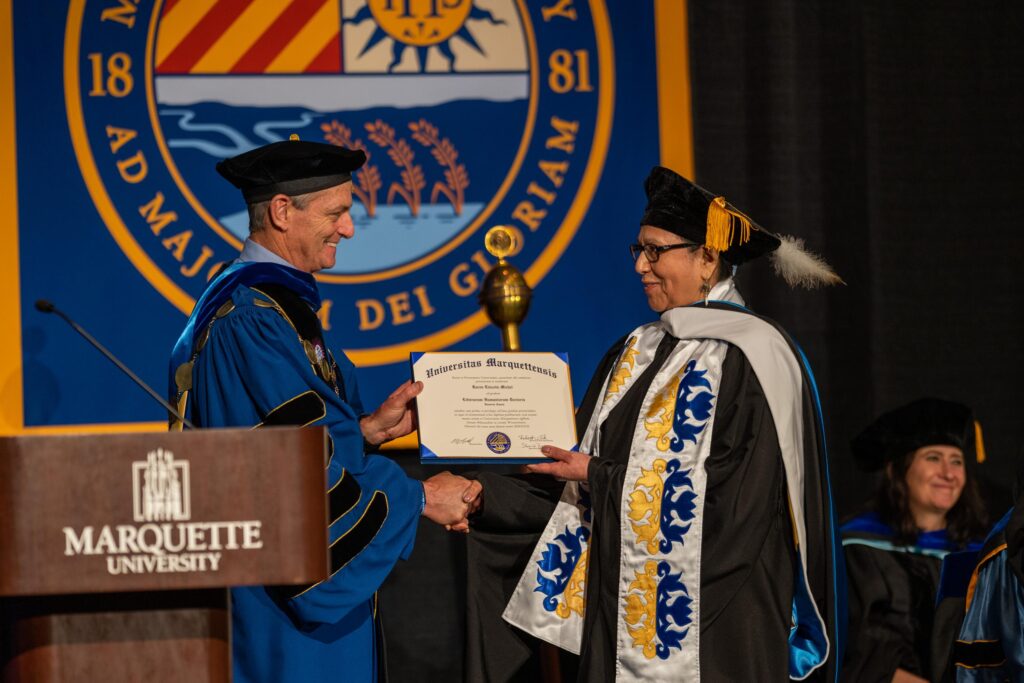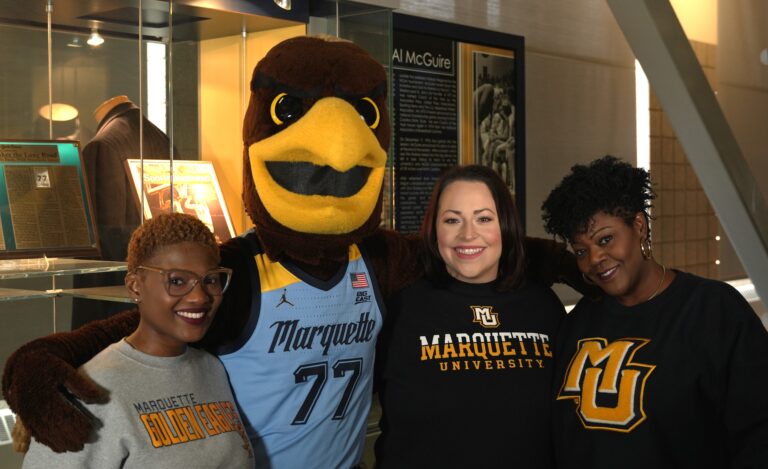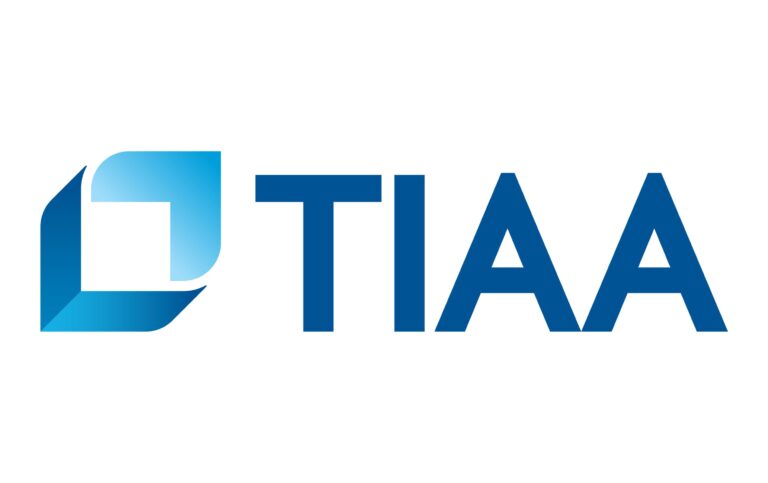Acknowledging the university’s footprint on lands and waterways originally occupied and stewarded by Native nations is in close step with the spirit of Indigenous Peoples Day – a day filled with moments to actively honor the survivance and indelible contributions of those peoples first here. Since its adoption in 2021, Marquette’s land and water acknowledgment has been voiced in diverse spaces big and small. One of the passages has more recently inspired some close work by the Raynor Memorial Libraries Digital Scholarship Lab. The Primary Source Digital Reader on how the 1833 Treaty of Chicago “cleaved and dispersed” a nation and forever changed Milwaukee is a compelling approach to this history.
Off the page, Marquette’s full land and water acknowledgment is now physically embodied in a sculptural marker nestled in the heart of campus. The unveiling was reverential and celebratory with the Indigenous community on and off campus central in the shaping of the program.

Looking around campus, you might not see the physical vestiges of Mission Week, but the goodwill engendered by special programming continues to reverberate. Forever now embedded in the history of Marquette is the honorary doctorate conferred upon Karen Lincoln Michel, a member of the Ho-Chunk Nation, a Marquette alumna and the President of ICT (Indian Country Today), a division of IndiJ Public Media. The ceremony was culturally anchored by the Thundercloud Singers and the Sanford WhiteEagle Post that included Ho-Chunk President WhiteEagle and his brothers Marcus and Joseph. Karen’s family joined them all in a special honoring song for her achievement. In all, it was an unforgettable welcome back home to Marquette.
Welcoming the Indigenous community to Marquette was an integral part of the Andrew Center for Restorative Justice’s annual conference. Under the leadership of the Hon. Janine P. Geske, former justice of the Wisconsin Supreme Court, Restorative Justice in Indian Country: Speaking the Truth, Instilling Accountability, and Working Toward Healing unfolded over a full day of sharing and dialogue with esteemed Native leaders from Milwaukee, tribal communities in Wisconsin and beyond. Justice Geske ensured the conference fostered the spirit behind the traditions of restorative justice and received early support from Marquette University’s Council on Native American Affairs with some membership actively engaging in the proceedings.

In another way, the promise of restoration, truth and justice has been activated by Marquette University’s Indigeneity Lab. This past year, each faculty-student research arm of the lab engaged in vital work that offers Marquette and the broader community the opportunity to contemplate the truths of an Indigenous past, present and future. The digital mapping project combined the voices of Indigenous community members, historical research and digital humanities tools to create a mobile walking/biking tour of the greater Milwaukee area available on Historic Milwaukee, Inc. The wild rice research arm of the lab had an opportunity to be on the land and water with a traditional elder this summer and fall to observe and collect samples of wild rice growing outside the traditional northern boundaries. The memory of the land holding remnants of a past bounty brings much hope for the restoration of rice in these warmer southern climates. The Native American boarding school research arm strategically targeted the extensive records of the Bureau of Catholic Indian Mission (BCIM), that document the Catholic Church’s involvement in Native American mission and boarding schools, to illuminate the story of the St. Charles Mission School on the Crow reservation. This past spring, a lab cohort traveled to Pryor, Montana, with digitized copies of related archival documents and photographs. Reconnecting these materials to individuals, families and community who were part of the school was a justice-oriented mission that will continue to be nurtured.
Although these institutional commitments to Indigenous peoples and knowledges are important to highlight on this day, we know the ongoing work to lift the dogged shadows that threaten their visibility in all the days yet to come is as critical.
Compiled with help from Dr. Jacqueline Schram, director of public affairs and special assistant for Native American affairs.



